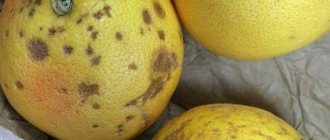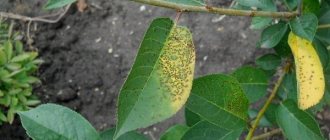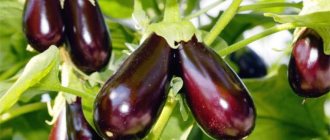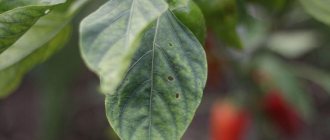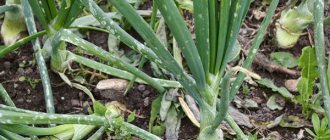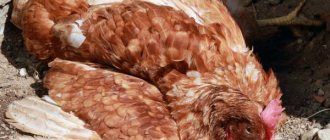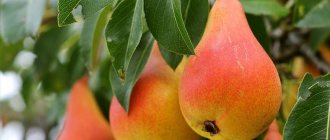Having planted spring garlic in the spring, in the summer you can cut off the feathers, add them to the salad, and collect the bulbs with cloves in the fall. They do not deteriorate even during long-term storage. Winter varieties are germinated in the fall. It would seem, why does garlic need to grow for an additional few months? There seems to be no reason for this, but the harvest in the new year will still have to be harvested a little earlier. This is the advantage of winter varieties. In addition to this, the farmer has more free time in the spring.
Onion (root) mite
Onion (root) mite
The mite is 0.7-1 mm long, oval-shaped, whitish-transparent. There are eight legs, their color is brown.
Mites persist in the soil of vegetable gardens, in plant debris, and on infected bulbs. It is carried with soil and planting material into areas free from it, into greenhouses. The tick is polyphagous. It damages the bulbs of garlic, onions, tulips, daffodils, snowdrops, hyacinths, irises, and dahlias. Harmful to potatoes. Plant debris can serve as food for it. The mite causes damage to onions during the growing season and during onion storage. The mite penetrates the bulb through the bottom, through wounds. The damaged bottom of the bulb becomes flabby, crumbles, and sometimes falls off. The diseased plant is stunted and turns yellow. Settling between the fleshy scales of the onion, mites feed on them. Damaged scales become rotten and the bulb rots. Bulbs severely damaged by mites dry out during storage.
The mite is moisture-loving. It is noted that when the humidity is below 60%, the development of the mite stops, but it does not die, but only enters a stage resistant to dryness and starvation. As humidity increases, ticks again switch to an active lifestyle.
Females lay eggs in bulbs, preferring those that are damaged by other organisms. Each female lays up to 800 white oval eggs. The tick development cycle under normal conditions of temperature and humidity is completed in 20–25 days.
Measures to combat onion mites
- Maintaining crop rotation. Good predecessors of onions are tomatoes, cucumbers, cabbage.
- Removing rotten bulbs and post-harvest residues from the garden.
- Control of other onion pests that cause wounds to plants through which the mite penetrates the bulb.
- Harvesting onions in dry weather and drying them in the sun until the leaves dry out.
- Rejection and destruction of diseased bulbs when storing onions and during storage.
- Selection for planting healthy bulbs that are not infected with mites and other pests and diseases.
- Disinfection of onions before planting by heating at a temperature of +35... +37′ C for 5-7 days. This operation can be performed by placing a baking tray (box) with sowing material on the heating radiator.
Insect pests
Harm to garlic can be caused not only by pathologies, but also by pests. These include the following parasites.
Onion fly
This pest leads to slower development of the plant, wilting of the above-ground part of the crop and softening and rotting of garlic cloves. To get rid of the parasite, it is recommended to use a solution of tobacco dust. The product is used for irrigation and spraying.
Onion moth
This pest waits out the winter in the upper layers of the soil and becomes active during warming. Infestation by the parasite is characterized by the appearance of dark stripes on the leaves. For therapy, it is recommended to use the same composition as in the previous case.
Garlic nematode
Due to the action of such a pest, the development of the root system is delayed and yellow or brown spots appear. A 5% solution of potassium permanganate helps get rid of the parasite.
Tobacco thrips
This pest waits out the winter in the ground and becomes active as the weather gets warmer. To get rid of it, it is recommended to use an infusion of celandine. To prepare it, you need to place 1 kg of celandine tops in 10 liters of boiling water. This substance should be infused for 24 hours. Next, the solution must be filtered and used to treat the plant.
Root mite
This pest appears due to the lack of preventive measures before growing planting material. Signs of parasite activity are rotting of the crop cloves. To avoid damage to the plant by the pest, it is recommended to burn the pellets of the drug “Gamma” 2 days before harvesting.
Tobacco thrips
Tobacco thrips
An insect with a narrow body, 0.5-1 mm long, dark brown in color. Thrips have two pairs of wings, they are narrow, fringed with a fringe of hairs. The larva is similar in appearance to an adult thrips, but is smaller in size and does not eat its wings.
Tripe damages onions, cabbage, cucumbers, tobacco, watermelons, tulips, carnations, gladioli, dahlias, lilies, daffodils and other plants. Harmful in open ground and in greenhouses. On onion plants, tripe settles in the axils of leaves and on inflorescences. Adult thrips and their larvae pierce the plant tissue with their proboscis and suck out the juice. At the injection sites, whitish spots appear on the leaves, which merge with each other if the damage is severe. Damaged leaves become distorted and, starting from the top, dry out. The development of the bulbs slows down, they remain small. When the number of thrips is high, onion inflorescences often dry out, and if they form seeds, they are puny and unsuitable for sowing.
Tripe develops in 3-4 generations per year. Adult thrips overwinter in plant debris, in soil and under dry bulb scales. In early spring, thrips feed on weeds, then move on to vegetable and flower crops. Females lay eggs one at a time in leaf tissue. The egg stage lasts 5-6 days. The development of one generation is completed in 15-30 days. In autumn, thrips go to their wintering grounds. Often thrips crawl under the dry scales of the bulbs and end up with them in storage. It is noted (B.A. Gerasimov et al., 1961) that on onion sets, thrips, located between dry and fleshy scales, feed and reproduce all winter.
Measures to combat tobacco thrips
- Proper crop rotation: return onions to the same place no earlier than after 3-4 years.
- Cleaning up plant residues from the garden. Deep digging of the soil in the fall with embedding of plant remains.
- Warming up onion sets infested with thrips at a temperature of +42... +43° C for two days or warming up the sets before planting in hot water at a temperature of +45° C for 10 minutes, at +50° C for 5 minutes.
- After warming up, the sets are cooled in cold water.
Garlic pests
Garlic pests are dangerous not only in themselves. In addition to damaging and destroying leaves and heads, many insects are carriers of diseases. And fighting diseases is somewhat more difficult than fighting pests, so they should not be allowed to spread in the garlic bed.
Tobacco thrips
Thrips is a very small light yellow or brown insect, reaching only 1 mm in length. After the females lay their eggs in the soft tissues of plants (usually leaves, and not just garlic), literally within a few days voracious larvae emerge from them. They feed on the juices of various plants, sucking them both from leaves and inflorescences. At the same time, the garlic weakens, stops growing, and if the pest spreads strongly, it may die. Detecting the pest is easy.
Thrips harm many vegetables and flower plants, garlic is no exception
Thrips are almost guaranteed not to appear if correct crop rotation is observed and the beds are cleared of weeds and plant debris in a timely manner. He is afraid of the smell of carrots, which should be planted next to garlic. In addition to these simple measures, the spread of the pest is prevented by treating the planting material with hot water (the teeth are kept for 8–10 minutes in water with a temperature of about 45 ° C, after which they are dipped in cold water).
If thrips appears, it can be destroyed with infusion of celandine. To do this, fill a bucket with grass, fill it with hot water and leave it for 2 days, after which it is filtered and the plants are sprayed with this infusion. Numerous chemical preparations act more quickly, for example, Vermitec, Actellik, Karate, etc. They should be used according to the instructions, but since a lot of time usually passes before the garlic is harvested, you should not be too afraid of the effect of the “chemistry” on the crop, but when spraying you must be very careful.
For example, the drug Vermitek, which is based on the substance abamectin, causes paralysis in the pest, and begins to act the very next day. 2-3 treatments are required with an interval of 5-7 days; to prepare a solution, 5 ml of the drug is diluted in 10 liters of water. However, the drug is harmful not only to thrips and other insects: for humans it belongs to the 2nd hazard class, so precautions when working with it imply the mandatory use of a respirator and clothing that will be immediately sent to the wash. At the same time, according to the instructions for the drug, you can harvest the crop within 3-4 days after its use. Similar information applies to other marked drugs, although the active ingredients in their composition are different. Thus, the drug Karate contains lambda-cyhalothrin, which is less dangerous to humans (hazard class 3), and Actellika contains pirimiphos methyl (class 2), however, their effect on pests and the release time for manual work are almost the same .
Onion fly
The onion fly is quite large, about 1 cm, gray in color, and its larvae are white. Appears at the end of spring, lays eggs at the base of garlic and onion plants: at the base of leaves or directly in the ground. The larvae that hatch after a week do not harm the leaves: they quickly make their way inside the young teeth and gnaw them. As a result, the garlic heads soften and rot.
The onion fly looks like a regular annoying fly
The appearance of a fly is prevented by the same techniques as in the case of thrips. Traditional methods provide a good deterrent effect. For example, pollinating plants with a dry mixture of tobacco dust, wood ash and ground pepper. At the very beginning of summer, it is useful to water the garlic with salt water (a glass of table salt per bucket of water). If you repeat the procedure after another 2-3 weeks, the fly is unlikely to appear. If larvae are detected, it is better to immediately use insecticides, for example, Iskra, Inta-Vir or Aktara.
For example, the active ingredient of the drug Inta-Vir is cypermethrin, which belongs to the insecticides - pyrethroids. It poses no danger to plants, but it harms both unwanted and beneficial insects, so it should be used with caution. In relation to humans, it belongs to substances of the 3rd hazard class. To prepare the solution, the tablet is dissolved in a bucket of water and 2-3 sprays are carried out with an interval of 2 weeks. The harvest can be harvested 2 weeks after treatment.
The other drugs listed above work similarly. For example, the composition of the insecticide Iskra Double Effect, in addition to cypermethrin, includes permethrin, which enhances the effect of the first pyrethroid. But in other drugs in the Iskra line, the composition may be different: for example, Iskra Zolotaya “works” due to imidacloprid, as a result of which its spectrum of action is somewhat wider, and Iskra M is a drug based on karbofos. Aktara, which contains the insecticide thiamethoxam, is also moderately dangerous to humans. In most cases, spraying with its solution is carried out once or twice (with a weekly interval); the composition of the working solutions and methods for their preparation are described in detail on the packaging.
Onion moth
This is a small gray-brown moth with a wingspan of up to 14 mm. At the beginning of summer, it lays yellowish eggs no larger than 0.4 mm in size between the leaves of garlic and onions, from which yellow-green caterpillars soon emerge. Longitudinal light stripes or irregularly shaped spots on the leaves are the result of caterpillar activity. As a result, the leaves wither and die, and the entire plant weakens. They are especially active in dry weather. Measures to combat moths are approximately the same as for onion flies. Among the most active drugs, in addition to Iskra or Aktara, Fastak can be noted. It is based on the substance alpha-cypermethrin (hazard class 2 for humans), two sprayings are required with an interval of 10 days.
Therefore, if the matter has not gone too far, it is better to use the less dangerous usual Spark by dissolving the tablet in a bucket of water. True, many insecticides with similar names are now sold (Iskra-bio, Iskra Double effect, Iskra golden, etc.), but their action is similar, you just need to carefully read on the packaging how to properly prepare the solution, and also after how many days to repeat the treatment.
Recent Entries
Lilac perennials that are beautiful, compact and do not crowd out other plants Why when buying seedlings you should not take the sellers’ word for it and how to determine the age of the plant using 3 signs Tomato seedlings have turned purple or whitish: why the color has changed and how to save the plants
Onion moth is an insect whose caterpillars destroy onion and garlic feathers
Garlic nematode
The nematode is a very small, thin, white worm that feeds on the sap of garlic. There are many nematodes, and only on garlic there are three types: stem, gall and root. The latter lives in the soil, gnaws out young plant heads, and is difficult to detect in time. As a result, the scales loosen and the head rots. The root-knot nematode forms small swellings on the roots, so it also does not manifest itself immediately. The stem is detected by brownish spots on the leaves, as a result of which the feather is deformed.
A nematode that has settled in a garden bed can leave a gardener without a harvest.
When nematodes appear, they must be dealt with immediately, and garlic should not be planted in the same place for 4–5 years. After harvesting, the soil is watered with a formaldehyde solution (1:25), using half a bucket per 1 m2 and taking all precautions. The plantings themselves can be saved only if the pest population is small. Traditional methods include tobacco decoction (0.5 g of tobacco dust per bucket of water, boil for 2 hours, dilute by half after cooling) or a decoction of calendula roots (0.5 kg per bucket of water, boil for 15 minutes, cool). Plants and soil are sprayed with these infusions.
Unfortunately, if a pest appears en masse, it is almost impossible to save the crop; strong chemicals will not help. Therefore, it will be necessary to properly treat the bed in the fall, and the planting material must be disinfected in the spring. Even soaking the cloves in water for 24 hours can reduce the risk of infection. But it is more reliable to process them in a solution of potassium permanganate (24 hours in a pink solution). There are also recommendations about treating teeth with formaldehyde, but here you need to be careful when preparing the solution. It is produced in the form of a 40% solution, and it must be diluted very strongly: the maximum concentration for disinfecting planting material is 0.5%, that is, it should be diluted 80–100 times. In industrial vegetable growing, this procedure is widely used, but in private farms it is better to limit it to potassium permanganate.
Garlic mite
The mite is one of the most frequent guests on garlic, but it can manifest itself not only in the garden, but also later, during storage of the product. This is a very small creature, about 0.2 mm, four-legged, whitish in color. It is very difficult to detect, but the results of its activity are known: these are depressed yellowish spots found on adult heads under dry scales. Females lay very small eggs on garlic leaves in the summer, and after a few days the harmful activity of a new generation begins.
When enlarged, the tick probably resembles a jellyfish
Since mites live not only in the ground, but also in adult heads, inspection of the cloves before planting and their thorough disinfection are mandatory. Success in combating it during the growing season of the plant is very doubtful, although the presence of the pest is not difficult to determine: if it was present in the cloves, then the leaves may initially grow crooked. Most conventional insecticides have no effect on ticks; they are killed by acaricides designed specifically to combat ticks. Thus, the drugs Actofit or Actoverm are effective, but it must be taken into account that, despite the fact that they belong to biological products, they have class 3 toxicity for humans (moderately dangerous).
The action of these drugs is based on blocking the nervous system of pests; their complete death occurs after 2 days. To prepare a working solution, 4 ml of Actofit is dissolved in 1 liter of water, and a maximum of two treatments are carried out per season. In principle, the active ingredient in both of these drugs is aversectin C - the same compound as in Fitoverm. Therefore, before buying drugs in a store, you should carefully read the instructions and compare prices.
Aphid
Aphids are well known to gardeners, as they are one of the most common enemies of most crops. Even though there are many types of aphids, they look almost the same; The measures to combat them are also similar. Aphids always settle on the youngest leaves, but then move to others, forming entire colonies. During the season, many generations change, and each one feeds on plant juices. The leaves of young garlic, damaged by aphids, become distorted and often become diseased, since aphids are capable of transmitting pathogens of various diseases.
As on other vegetable plants, aphids on garlic form entire colonies
It is surprising that adult garlic itself is a good remedy for aphids on other plants.
Fortunately, getting rid of aphids on young garlic is not difficult. There are many folk remedies (mustard powder, soda, tobacco dust, wood ash, etc.), but if you are late and such remedies do not help, you can use chemical insecticides (for example, Inta-Vir or Fufanon) on young plantings for a long time forget about this pest. Fufanon, which contains the organophosphate substance malathion, is no less effective than Inta-Vir, and it affects humans to approximately the same extent, so it should not be used unless unnecessary. If the aphids prevail, 10 ml of the emulsion is dissolved in a bucket of water and sprayed on the plants. In total, no more than 2 treatments are carried out per season, the last one - 3 weeks before harvest.
Video: main pests of garlic
Onion leaf miner
Onion leaf miner
A black fly with a yellow head and antennae. The length of its body is 2-2.5 mm. The larva is whitish, up to 6 mm long.
The fly damages onions, often grown from turnip sets, and onion seeds. Onions of the first year of life, sown with seeds, are little damaged. Fly pupae overwinter in the soil in areas that have come out from under the onions. Flies emerge in May. The fly lays eggs one or several at a time on the inner wall of the leaf, after piercing it with the ovipositor. The larvae eat away the pulp of the leaves from the inside in the form of small irregularly shaped areas. The integrity of the outer skin of the leaf is not compromised. From the outside, mines appear as whitish spots. The feeding of several larvae in the leaf causes it to dry out.
The fly develops quickly: the egg stage lasts 4-5 days, the larvae - up to 15 days. The larva, having finished feeding, leaves the leaf and goes into the soil to pupate. Adult flies feed on the juice of onion leaves. To do this, they prick a leaf with the ovipositor and lick the juice protruding from the wound. At the injection site, a small spot, like a dot, forms, clearly visible against the green background of the leaf.
Measures to combat onion leaf miner
- Maintain crop rotation and avoid re-planting onions in one place.
- Avoid, if possible, the proximity between the old and new sections of the onion.
- Deep digging of the soil after harvesting onions.
Onion fly
Onion leaf miner
Damages onions and sometimes garlic. Onion seedlings, onion sets and onions intended for seeds suffer from flies. More significant damage is caused by continuous cultivation of onions.
The fly is ash-gray with black legs, its body length is 6-7 mm. The larva is up to 10 mm long, whitish, its body is narrow at the anterior end. At the posterior end of the larva there are 16 tubercles.
The fly develops in two generations per year. The pupae overwinter in the soil at a depth of 15–20 cm. In the spring, the flies emerge in early May. The year of the flies coincides with the cherry blossoms. Flies first feed on the nectar of flowers, then begin laying eggs. The female lays several white oblong eggs on the neck of the onion, between the leaves, under lumps of soil near the plants. Egg development lasts 3-8 days. The larvae penetrate the bulb through the bottom or through the base of the leaves. While feeding inside the bulb, they make numerous passages.
Damaged bulbs rot, leaves turn yellow, and the entire plant is easily pulled out. The development of the larva lasts 20-25 days. Having finished feeding, the larva goes into the soil, where it pupates, and after 15-20 days the second generation flies hatch from the pupae.
Measures to combat onion fly
- If possible, sow and plant onions as early as possible.
- Plants that are stronger by the time the fly larvae hatch are less damaged. Late crops are more damaged by flies.
- Placing onions next to carrot beds. Substances (phytoncides) secreted by carrots repel onion flies, and onion phytoncides repel carrot pests. In order to repel flies, at the beginning of their egg laying, the soil along the rows is sprinkled twice (with an interval of 7 days) with tobacco dust or a mixture of tobacco dust and lime (in a 1:1 ratio).
- Repeated inspection of onion plantings in order to remove and subsequently destroy plants damaged by fly larvae.
- Collection and destruction of post-harvest residues.
- Deep digging of the soil after harvesting onions and garlic.
Onion hoverfly
Onion hoverfly
The fly is metallic green in color, with three pairs of narrow light spots on the sides of its abdomen. The body length of the fly is 7-9 mm. The larvae are grayish-yellow, wrinkled, with a process in the form of a short tube at the posterior end. The length of the larva is up to 11 mm.
The fly damages, in addition to onions and garlic, tulips, daffodils, irises, gladioli, and sometimes the underground parts of carrots, beets, and potatoes.
The fly develops in two generations per year. The larvae overwinter in bulbs in the field, rarely in storage. Pupae can overwinter. Flies fly out in early June. Females lay eggs in groups of 5-9 pieces on the soil near plants or on bulbs. The larvae penetrate the bulb, live in it for 25-30 days, then go into the soil to pupate. The second generation flies emerge in July-August. Their larvae cause damage in August-September.
The larvae, feeding on the bulb, destroy it. The inside of the onion completely turns into a rotting mass.
Measures to combat the onion hoverfly
- The same as with the onion fly. In addition, the following actions are necessary: planting onions with bulbs that are not infected with hoverflies; careful control of wireworms, onion flies and other pests, since hoverfly larvae often colonize already damaged bulbs.
Pest treatment
Pests of onion crops can be controlled using traditional methods and using various chemicals. Gentle, environmentally friendly methods that are harmless to humans are preferable. But in extreme cases, for example, with a severe degree of damage, the use of fungicides is justified.
Try proven fertilizers:

